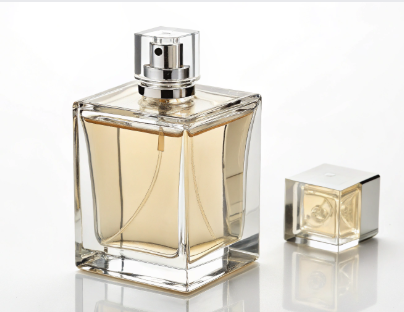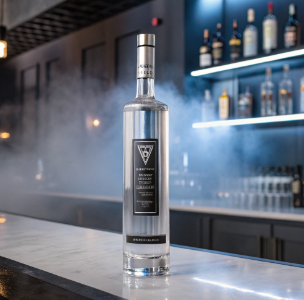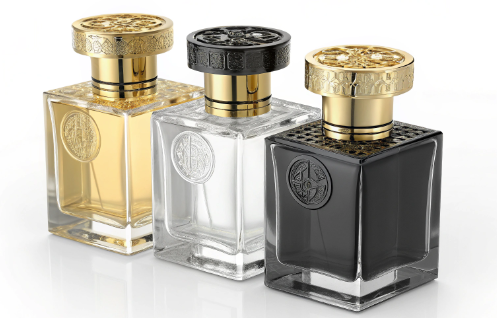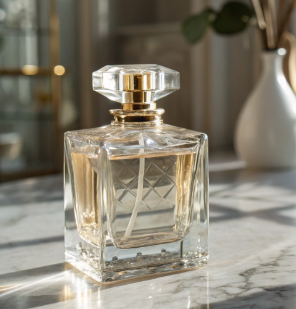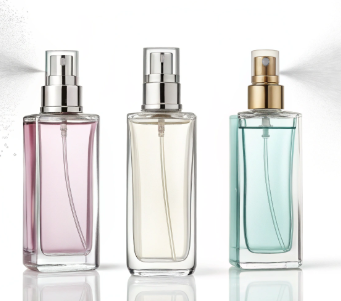Glass perfume is a category of scent packaged and marketed in glass containers, valued for its transparent appearance and timeless elegance. Most brands opt for glass perfume because it maintains the scent’s freshness and prevents degradation. Glass bottles come in all sorts of shapes and sizes, from tiny travel sprays to giant display pieces. Most employ heavy, light-proofing, flint or colored glass in order to keep the perfume from being destabilized by exposure. Factories are able to create these bottles either mold-blown or hand-blown with a custom brand’s logo or label. A few bottles come with novelty features such as spray pumps or tight stoppers to help you measure your usage. The feature discusses the role of glass bottles in contemporary perfume culture.
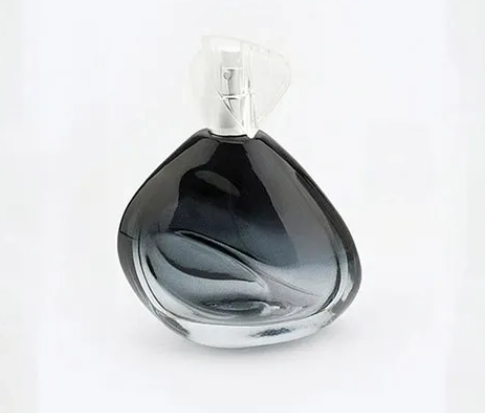

The Superiority of Glass
Glass remains the gold standard for perfume packaging. Its demonstrated durability, transparent surface, and capacity to retain shape position it beyond plastics, metals, or ceramics. Glass bottles maintain their form even when heated, and they never bend or erode from standard use. This maintains their newness for ages. Glass, unlike plastic, never alters the scent or color of the perfume within. It keeps out air and protects the fragrance. Glass is environmentally friendly, too. We can reuse and recycle it endlessly without a bit of loss. This is crucial for brands and buyers who care about waste and want to use less plastic.
Its look contributes to the appeal of glass, as well. A clear or colored glass bottle displays the perfume and provides a feeling of opulence. Most premium brands choose glass because it represents sophistication and elegance. The shine and weight of glass make every bottle a special experience in the hand. The way glass grabs onto the light makes even a plain bottle into a showpiece. That’s the reason glass never looks dated, why it works in both traditional and contemporary styles.
Benefits of glass for keeping fragrance safe:
-
No outside smells or air can get in
-
No risk of harmful stuff leaking into the perfume
-
The smell, color and quality remain the same for an extended period.
-
Glass can take sunlight and heat without breaking down
-
Simple to clean out and repurpose for new scents or whatever.
Its ability to be molded is another advantage. Glass can be molded into various shapes—round, square, or with delicate lines and cuts. Special finishes such as frosted, colored or embossed allow brands to create a bottle that suits any aesthetic or tactile style. That’s what makes glass the #1 choice when design counts. It can be understated or daring, plain or embellished, but consistently appears stylish. Glass taps into the movement towards green packaging. Research indicates that it makes buyers pay more for products in glass because it demonstrates concern for the planet.
Ancient Perfume Vessels
Ancient perfume vessels display more than artisanry. They recount how people understood scent as both everyday and sacred, and how they valued the aesthetics of the containers that housed their oils.
-
Egypt, Mesopotamia, Greece and other early cultures all applied perfume in ways connected to status, spiritual life and bodily care. Egyptians used to bury perfume jars with their deceased, even in the tombs of the rich. Mesopotamians and Greeks crafted and exchanged their own designs, such as aryballos and alabastron flasks, demonstrating that these vessels were more than mere receptacles. They were indicators of what people appreciated.
-
Workmanship in vintage perfume flasks is exceptional. Even terracotta urns of the 2nd millennium BC, discovered in Egyptian tombs, display exquisite ornamentation. Egyptian glass perfume bottles reflect the development of glass-blowing, depicted in the Beni Hassan wall paintings near Thebes. Ancient Greeks manufactured petite, spherical ceramic flacons for oils, formed and illustrated with depictions of everyday life or lore. Phoenicians and Romans would later perfect glass-making, using core-forming to form colored glass into flat-walled thin flasks. Some bottles are so well made, with gold, silver and carved stone, they are like jewelry—miniature art with a purpose.
-
Ancient perfume vessels were not limited to glass. Artisans utilized numerous substances, sometimes for their appearance, texture or worth. Alabaster kept scent wonderfully well and cool. Ceramic and terracotta were durable and inexpensive. Metal and stone for special bottles. The Egyptian double cartouche box, crafted from gold, silver, glass and clear calcite, demonstrates the incredible amount of craftsmanship and wealth that went into certain pieces.
-
These vessels were used in ritual as well as daily dress. While perfume was personal, it was sacred and used in anointing, burial or as offerings to gods. Bottles that were easy to hold, open and use. Some were made to be held in the hand, others placed on altars. Museums and antique shops now reflect just how much these objects meant to ancient people. A good number have endured because they were durable and were placed in tombs for the afterlife.
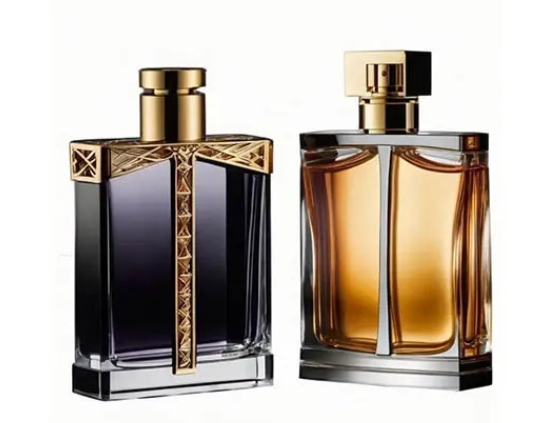

The Evolution of Bottle Design
Perfume bottles have evolved quite a bit. They’re not merely vessels, they display changes in culture, craftsmanship, and taste. From the beginning, these bottles were narratives of culture and status.
-
Ancient times: clay pots, alabaster jars, and carved glass in Egypt, Mesopotamia, and Greece. Perfume was for the rich and the sacred, so bottles had elegant shapes and tiny hand crafted embellishments.
-
18th century: Chinese flasks with carved scenes of sages, birds, and plants. We experienced Venetian glasswork and in France, bottles got fancier.
-
Art Nouveau (late 19th–early 20th century): flowing shapes, floral themes, and curved glass. Bottles resembled nature – with its soft lines and soft colors.
-
Art Deco (1920s–1930s): bold lines, clear shapes, and sharp glass cuts. Some were even metal or colored enamel.
-
Post-World War I: demand rose. Our troops returned stateside with French perfumes, and brands started to use their bottles to differentiate.
-
Mid-20th century to now: spray bottles showed up in 1907, making perfume easy to use. Today’s bottles are designed by leading designers and are functional and collectible.
Art Nouveau and Art Deco influenced bottle design. Art Nouveau bottles used abundant curves and flora. Art deco loved clean line and dramatic forms. These styles made bottles more than a jar—they were art that fit the era.
Tech also transformed bottle design. In 1907, the invention of the first spray bottle meant we could apply perfume with a quick press, not a pour. As glasswork improved, factories could do more shapes and colors, and details became crisper. Today, 3D design and laser etching allow makers to experiment with new aesthetics and textures. Other brands still stick to the tried-and-true – hand-blown glass – for that vintage touch.
What consumers desire drives bottle design. Originally, perfume was a rare commodity and the bottles reflected affluence. Eventually, brands crafted bottles that were convenient to hold and dispense. Big, bright bottles ruled the 80’s and now, a lot of us like it simple and clean lines. Others desire bottles that they can collect or reuse.
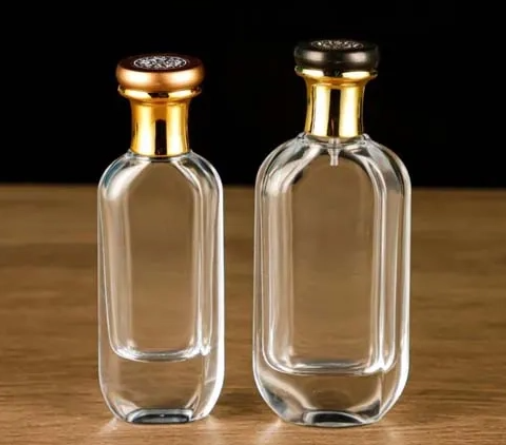

Glass Chemistry and Fragrance
Glass has been instrumental in fragrance history and technology. Its chief chemical characteristics—non-reactive, airtight and capable of protecting against moisture—make it an ideal medium for perfume storage. These characteristics aid in maintaining fragrance authentic and protected from external alteration. The table below sums up how glass chemistry shapes fragrance stability:
|
Property |
How It Helps Perfume |
|---|---|
|
Non-porous |
Stops air or moisture from getting in |
|
Chemically inert |
Won’t react with oils, alcohol, or additives |
|
Light-blocking (if tinted) |
Shields from UV, slows down breakdown |
|
Airtight |
Stops scent loss and keeps oils stable |
Glass is amazing because it doesn’t have a reaction with the potent oils and alcohol in perfume. A lot of other materials, such as certain plastics or metals, can impart minor chemical shifts. It’s these shifts that alter the scent as it ages. Glass preserves the fragrance integrity, which is important for both big batch and small-batch fragrances.
Clarity is another highlight. Clear glass bottles flaunt the authentic perfume hue. This is not just for appearance. It assists purchasers monitor quality and detect any alteration in the liquid. Clear glass also aids brands in differentiation, since tint and transparency can suggest what’s within. In international markets, buyers like to believe what they see.
Glass preserves the integrity of scented oils. Perfume makers have understood this for centuries. In Ancient Egypt and Rome, pot-makers shaped tiny glass pots for unguents. Islamic rosewater sprinklers used glass to contain and spray fragrance. Glass was not just for storing perfume in 16th-century Europe — it was for making it, too, as evidenced by rare books on distillation. By the 18th and 19th centuries, international trade in fragrances resulted in increased exchange of glassmaking expertise—cut glass and enameled glass bottles were popular, even turning into pieces of art. Glass snuff bottles held powdered leaves infused with scents, demonstrating glass as both storage and lifestyle.
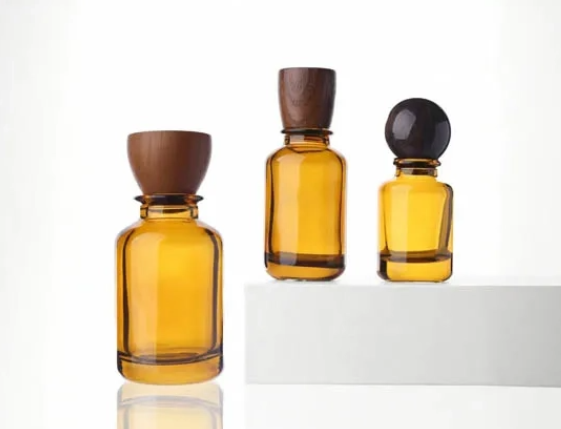

The Unseen Artistry
Glass perfume bottles are not merely vessels for fragrance. They demonstrate prowess in craft as well as art. Makers employ dozens of techniques to transform ordinary glass into something people desire to hold onto. A checklist of glass bottle artistry often includes: hand-cut facets, sandblasting, etching, painting, enameling, gold leaf, engraving, and even inlaid stones. Any or all of these provide depth, color or shape to make the bottle POP on a shelf or in a collection.
Cooperation between perfumers and glass blowers is crucial for signature designs. Certain houses welcome glass masters to collaborate directly with scent designers from the beginning. It’s a bottle that matches the tale of the fragrance within. For instance, a perfume that evokes ancient Egypt might employ a bottle in the form of a pyramid, or one that calls to mind a stupa if the fragrance mixes Asian botanicals. These decisions aren’t merely cosmetic—they connect the perfume’s notes and raw ingredients with a form that provides potential purchasers a preview of what’s within.
Decorative methods such as engraving and enameling increase the appearance and worth of a bottle. Engraving can display delicate line work or names, while enameling provides vibrant, enduring color. Some bottles are designed to appear as fine art, with forms that toy with luminescence. These are the things that count most to collectors and buyers who view perfume bottles as art. A number seek out limited editions, signed works, or bottles from renowned glass masters—these attract premium prices at auction, and often wind up in art galleries.
The art of glass perfume bottles isn’t just skin deep. Others are employing scent as art, collaborating with perfumers to create fragrances for exhibition spaces or events. Some utilize strange substances, such as toxic water, to emphasize the relationship between fragrance, the environment, and our sense of worth. The leaning toward natural botanicals, frequently from special places, adds a further dimension. Bottles and scents alike reflect the care that went into making them. Every aspect, from the glass to the note within, is important to those who want more than a basic fragrance.
Sustainable Glass Futures
Sustainable glass is key for perfume brands and buyers who want to reduce waste and reduce their carbon footprint. Glass is one of the only packaging materials that maintains its integrity every time it’s recycled. Old glass can melt and form new bottles over & over. This provides glass with a genuine advantage compared to plastics or mixed material packs that frequently end up in landfill. When brands source recycled glass or collect sand from low-impact areas, they are protecting raw resources and reducing mining.
Innovations in glassmaking are helping the industry reduce energy consumption and minimize waste. Lighter bottles require less sand and less fuel to produce and ship. As an example, a few brands are now producing 100 ml fragrance bottles that weigh 100–110 grams instead of the traditional 200–220 grams. This just about cuts in half the glass per bottle and really optimizes shipping. Brands are transitioning to water-based inks for label prints and selecting coatings that emit minimal or no fumes. These may be incremental, but they help, reducing the damage done by each bottle to the world.
Many brands, these days, promote refillable or reusable glass bottles. Consumers can purchase a single quality bottle and top it up, or return it. This model is gaining traction rapidly, particularly at upscale and specialist fragrance retailers. Some brands even toss in plant-based or compostable caps, sleeves or boxes with their glass. These touches appeal to consumers that are looking for a complete sustainable package, not just a green bottle.
Customer demand now drives what’s on the market. More people care about where the glass and other inputs come from. They seek evidence that brands utilize recycled glass, reduce waste and educate their employees in eco-friendly practices. Others even verify whether a brand operates on wind or solar energy.
|
Brand |
Lightweight Bottles |
Recycled Glass |
Refillable Options |
Water-Based Ink |
Eco Coatings |
|---|---|---|---|---|---|
|
Brand A |
Yes |
Yes |
Yes |
Yes |
Yes |
|
Brand B |
No |
Yes |
No |
No |
Yes |
|
Brand C |
Yes |
No |
Yes |
Yes |
No |
|
Brand D |
Yes |
Yes |
No |
No |
No |
Conclusion
Glass preserves perfume. It’s air-tight, scent-holding and attractive. Producers opt for glass for a reason. Antique glass bottles demonstrate true craftsmanship. New bottles with smart shapes, new glass mixes. A few brands use thick glass or color to differentiate. Glass can be rinsed and recycled. A few of them even accept old glass bottles for refills. They like glass because it’s minty fresh and pure. It works with both vintage and modern designs. The glass in perfume story never ends. To choose the right perfume, consider the bottle as well. Want additional information on glass bottles or a quote? Contact now.
Frequently Asked Questions
Why is glass often used for perfume bottles?
Glass is non-reactive and keeps scents intact. It shields the fragrance from air and light, tending to maintain the perfume fresh and stable for an extended duration.
How were ancient perfume bottles made?
Old perfume bottles are made of glass, clay and stone. Craftsmen hand-moulded and embellished them, frequently employing rudimentary instruments and age-old methods.
What makes glass superior for storing perfume?
Glass doesn’t react with perfume notes. This keeps the scent unadulterated. It has excellent protection against contamination.
How has perfume bottle design changed over time?
From simple, functional shapes to artistic and decorative styles, perfume bottle design has come a long way. Contemporary bottles combine aesthetics with functionality, frequently incorporating branding.
Does glass affect the fragrance of perfume?
No, glass is chemically inert. It doesn’t affect the fragrance or integrity of perfume, so it’s perfect for storage and presentation.
Is glass packaging more sustainable than plastic for perfumes?
Yep, glass is recyclable and reusable. It’s less wasteful than single-use plastics, so it’s a greener option for perfume packaging.
What is the role of artistry in glass perfume bottles?
Glass perfume artistry Master craftsmen stone individual patterns that stimulate the wearer’s senses and add to the item’s allure.




